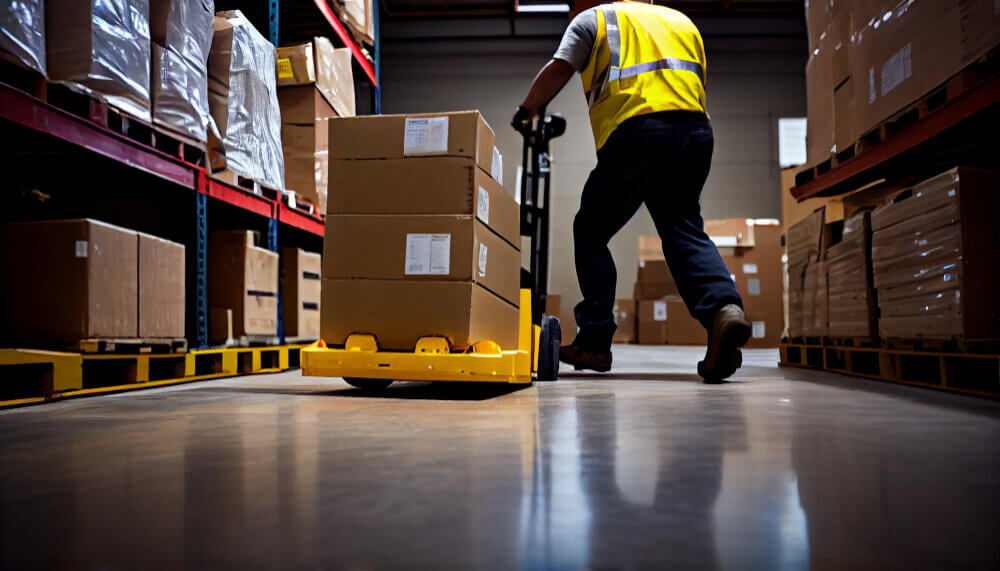A Summary of palletization

Palletization refers to the process of organizing and arranging items on a pallet for efficient storage, transportation, and handling. It involves placing goods or products on a pallet in a strategic manner to optimize space utilization, ensure stability, and facilitate easy movement using material handling equipment such as forklifts or pallet jacks.
History of Palletization
Palletization as a concept has been around for centuries, but it gained significant popularity and widespread adoption in the mid-20th century. The use of pallets to facilitate the movement of goods became more prevalent during World War II when the military recognized the benefits of standardized pallets for efficient logistics.
After the war, the concept spread to commercial industries, leading to the development of pallet standards and the growth of modern palletization practices.
Palletization Process
The palletization process involves several steps to ensure efficient and safe stacking of goods on a pallet. Here’s a general overview:
a. Select Appropriate Pallet:
Choose a pallet that suits the specific requirements of your goods, considering factors such as weight capacity, material, and size.
b. Plan and Organize:
Determine the quantity and dimensions of the goods to be palletized. Create a plan to maximize space utilization while maintaining stability and safety.
c. Prepare the Pallet:
Inspect the pallet for damage and ensure it’s clean and in good condition. Repair or replace any broken or damaged pallets. If required, add pallet accessories like corner boards or stretch wrap to enhance stability.
d. Stacking Order:
Start by placing heavier and more stable items at the bottom of the pallet. Distribute the weight evenly across the pallet to maintain balance. Use interlocking techniques or patterns to create a stable stack.
e. Secure the Load:
Once the items are stacked, use strapping, stretch wrap, or shrink wrap to secure the load and prevent shifting during transportation. This helps maintain stability and protect the goods.
f. Labeling and Documentation:
Clearly label the pallet with essential information such as product details, destination, and handling instructions. Ensure any required documentation, such as packing slips or shipping labels, is attached securely.
Tips for Effective Palletization
1. Consider Product Compatibility:
Group items with similar characteristics together to prevent damage caused by incompatible products, such as liquids or hazardous materials.
2. Optimize Space Utilization:
Strategically plan the arrangement of goods to maximize the use of available space on the pallet. Utilize vertical space while maintaining stability.
3. Weight Distribution:
Distribute the weight evenly across the pallet to prevent overloading or imbalances. This helps maintain stability during handling and transportation.
4. Use Proper Packaging:
Ensure that the goods are properly packaged and protected to withstand the rigors of transportation and handling. Use appropriate packaging materials, such as boxes, shrink wrap, or protective padding.
5. Train Personnel:
Provide training to employees involved in the palletization process. Proper training ensures they understand the correct techniques, safety measures, and the importance of efficient palletization.
6. Regular Maintenance:
Inspect pallets and equipment regularly for damage or wear and tear. Replace damaged pallets promptly and maintain material handling equipment in good working condition.
7. Collaborate with Suppliers:
Communicate with suppliers or partners to ensure standardized pallet sizes and compatibility, streamlining the handling and movement of goods throughout the supply chain.
Example:
Let’s consider a warehouse where a shipment of various electronic products, such as televisions, laptops, and speakers, has arrived for storage and distribution. The palletization process begins by selecting sturdy and appropriately sized pallets.
The items are carefully stacked on the pallet, starting with the heavier and more stable televisions at the bottom. The laptops and speakers are then arranged on top, using interlocking patterns to maximize stability.
Once the items are securely stacked, the load is secured using stretch wrap to prevent shifting during transportation. The pallet is labeled with relevant information, including product details, destination, and handling instructions. This organized and efficient palletization allows for easy movement and handling of the goods within the warehouse and during transportation to retail stores or customers.
Frequently Asked Questions:
- What are the advantages of palletization?
Palletization offers benefits such as efficient space utilization, easy handling with material handling equipment, reduced risk of damage, and streamlined logistics.
- What types of pallets are commonly used for palletization?
Common types of pallets used for palletization include wooden pallets, plastic pallets, and metal pallets.
- How does palletization contribute to supply chain efficiency?
Palletization enhances supply chain efficiency by enabling faster loading and unloading, reducing labor costs, improving inventory management, and facilitating smoother transportation and storage processes.
